The list of watches that enjoy a connection to space is much larger than you might imagine. Both officially and unofficially, watches from all manner of brands have been taken into space by astronauts from around the world. The Speedmaster may have been officially certified by NASA in the ‘60s, but the astronauts themselves certainly had a penchant for Rolex. Further, the Speedmaster is not the only watch to have been officially certified by a space agency. In 1994, Fortis produced the Official Cosmonauts Chronograph, which was officially certified by the Russian space agency, ROSCOSMOS, and given to individuals upon passing the Soyuz graduation exam.
The Russian Space Agency has its own history with interesting watches, beginning with the Pobeda taken into space with Chernushka, “Blackie” (a dog) on Korabl-Sputnik 4 (aka Sputnik 9), and the Sturmanskie worn by Yuri Gagarin during his first flight into space. Subsequently, watches to come out of the Soviet research institution, NII-Chasprom, were highly advanced for the era, made for use during EVAs that were planned within the Voskhod program. These instruments are woven into the fabric of the space race at its peak, and underline the importance of the watch as a tool during this era.
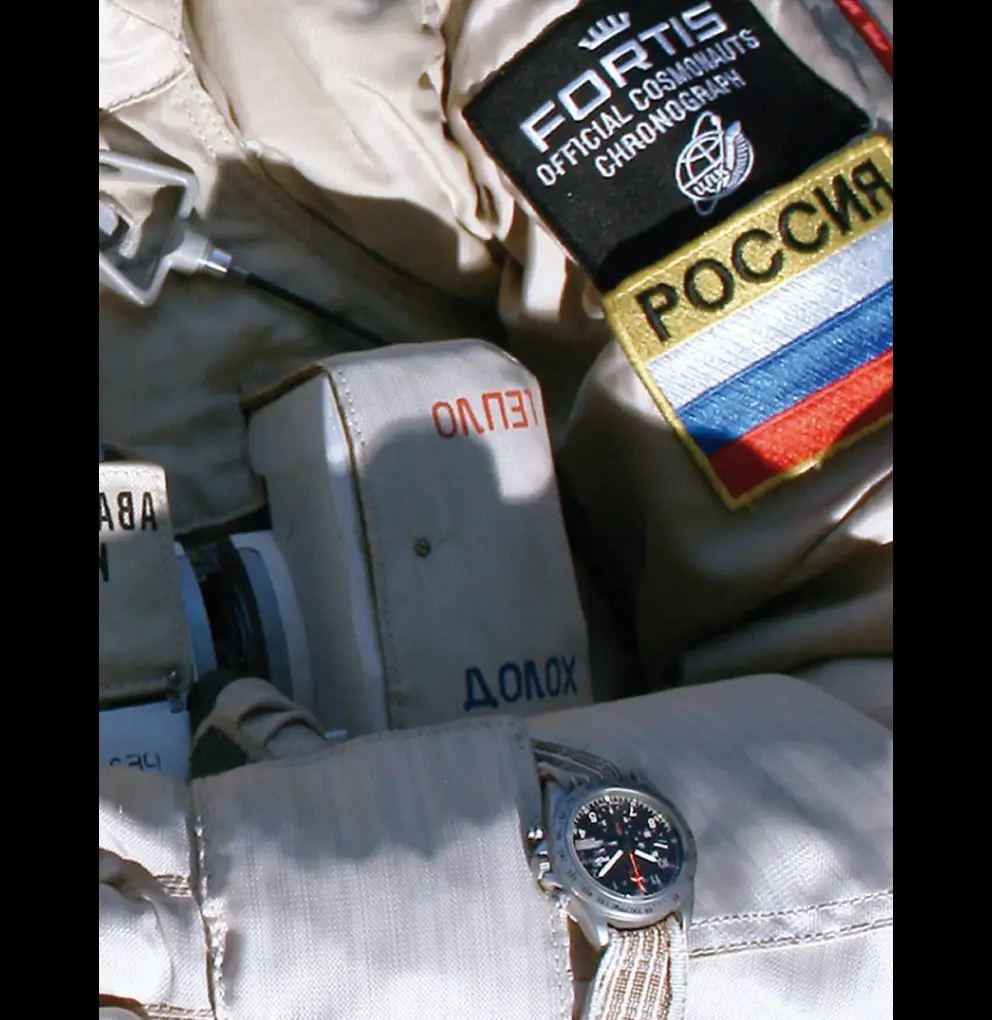
In December of 1972, the Apollo program flew its final mission with Apollo 17. Commander Gene Cernan and Lunar Module Pilot (and professional geologist) Harrison Schmitt would be the last men to step foot on the moon (to date). This would give way to a more practical era of space flights, and a concerted effort to a permanent human presence in low earth orbit. Space programs, from the Apollo–Soyuz Test Project to NASA’s Space Shuttle of the following decades were defined by these efforts, and gave us the ongoing ISS program.
It is in this context that the Shuttle-Mir program was launched in 1993, a joint effort between ROSCOSMOS and NASA that would fly 11 missions between February of 1994, and June of 1998. These missions would see the Official Cosmonauts Chronograph put to use, and would even subject the watch to direct space exposure, a claim very few watches can make. As you’ve likely noticed, a lot has changed in the intervening years (and if you want a great primer on that, I’d recommend Netflix’s Turning Point series on the topic) but, as it relates to this site, the Fortis Official Cosmonauts Chronograph holds up shockingly well.
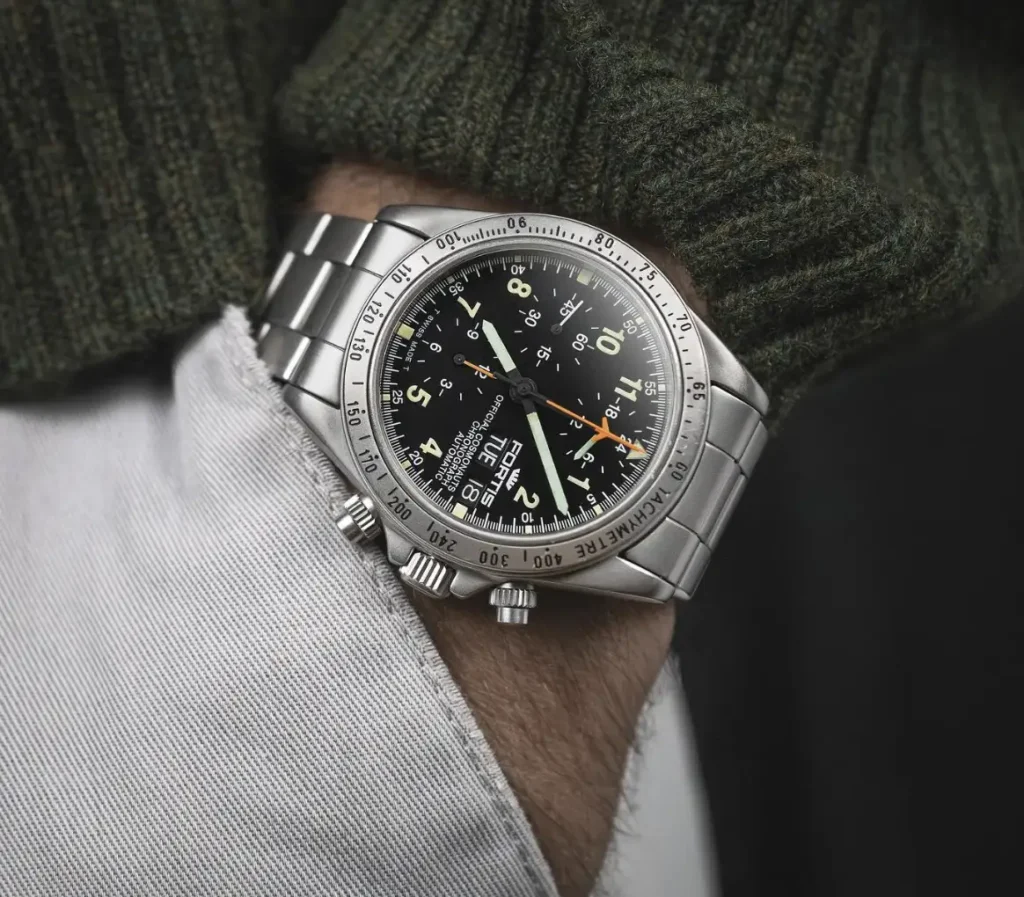
The Fortis Official Cosmonauts Chronograph (OCC) was put to use pretty much right out of the box. It began life as a 38mm steel watch using the famed Lemania 5100 chronograph movement. This watch initially used a rather peculiar layout, placing a 24 hour hand in the 12 o’clock sub dial, and mounting the minute totalizer at the central hand stack to track minutes around the perimeter of the dial. This is a highly practical way of presenting its complications within a dense space, putting emphasis on the timing abilities of the watch, and the 24 hour over the hours and minutes.
The design of the watch presents as very ‘90s in nature, and I say that as a compliment. There are no frills or heavy handed decisions present here. It’s very straightforward in nature, and almost utilitarian in approach. The sub dials aren’t outlined, nor are they sunken into the dial… they are represented purely by their indexes. They feel a bit like a prototype used for testing, in that they come more as an instrument than anything else. And that’s exactly what the watch feels like, an instrument.
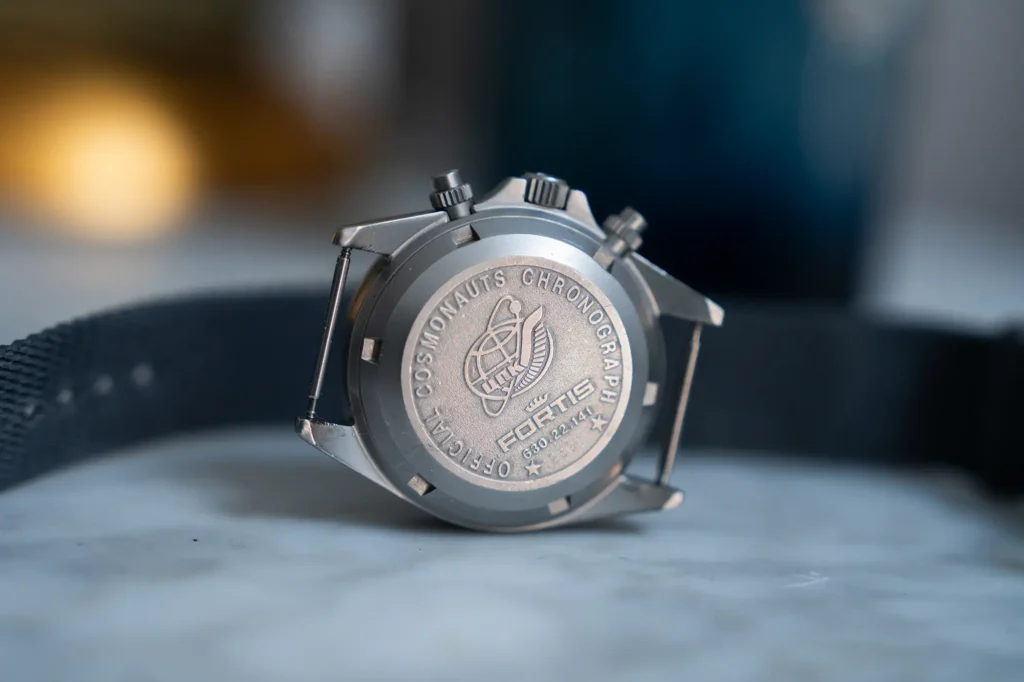
The base of the dial is matte black, which hosts light green tritium lume across the Arabic numeral hour markers and pencil style hands. The timing hands are represented in orange so they’re easy to pick out at a glance when in use. This pairing of colors, which is likely purely incidental, has become something of a calling card of this watch in my mind, and I absolutely love the way they all come together. It’s something of a time capsule, and lends to much of that ‘90s vibe noted above.
The dial is only one factor of that vibe, and another undoubtedly comes from the case. This is an exceptional example of a ‘90s tool watch case. Its proportions are well considered, the design is interesting without being overt, and there are no polished chamfers or flourishes in sight. The lugs are trim and blend with a very subtly rounded mid case that transitions into a prominent belly of a caseback. The case gets a uniform satin like finish that doesn’t call attention to itself, but offers plenty of interesting angles upon closer inspection.
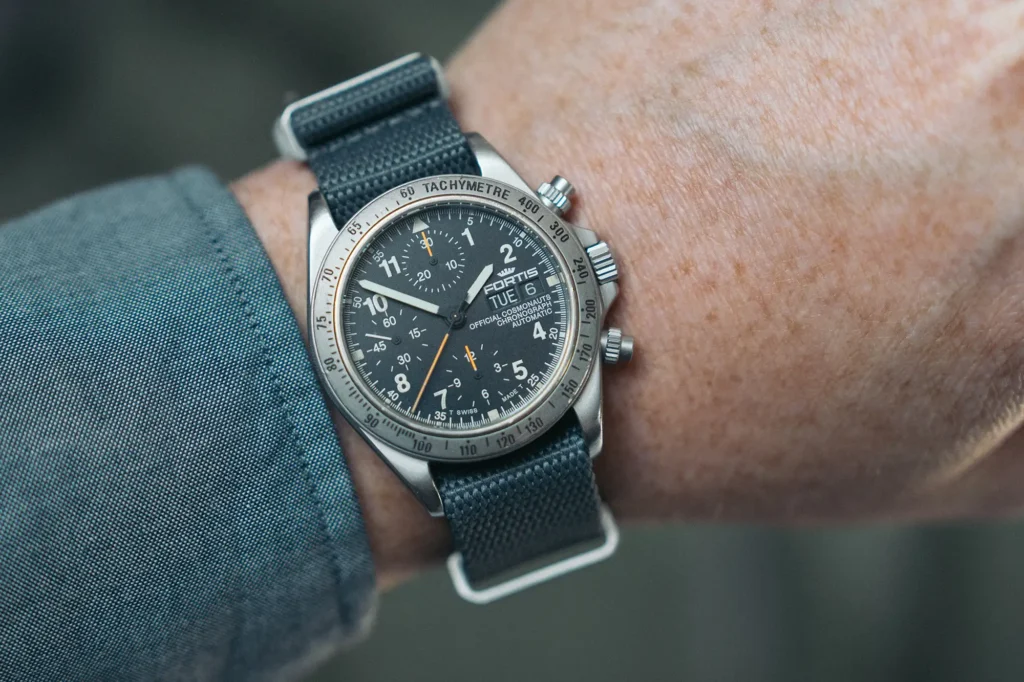
By the later half of the ‘90s, Fortis began using the Valjoux 7750 automatic chronograph movement within the OCC. Use of this movement eliminated the 24 hour at 12 o’clock, and brought a more traditional chronograph layout to the dial. The minute totalizer also moved to its own sub dial, leaving just the hour, minute, and timing seconds hand mounted at the center. This layout is likely a touch cleaner thanks to the absence of another complication, but it’s lost a touch of that great character brought by the Lemania movement.
The Valjoux 7750 is a movement we generally associate with rather bulky cases, and while the OCC is not a thin watch, the case has a certain amount of elegance not typically seen when a 7750 is involved. It still measures 38mm in diameter, and 46.5mm from lug to lug, while the thickness is a more expected 14mm. It carries itself quite well, though, and is eminently wearable thanks to how the undercarriage of the case is handled. This is a stark contrast to the current selection of Fortis space themed watches, such as the Stratoliner, and Novanaut, which get massive block like lugs.
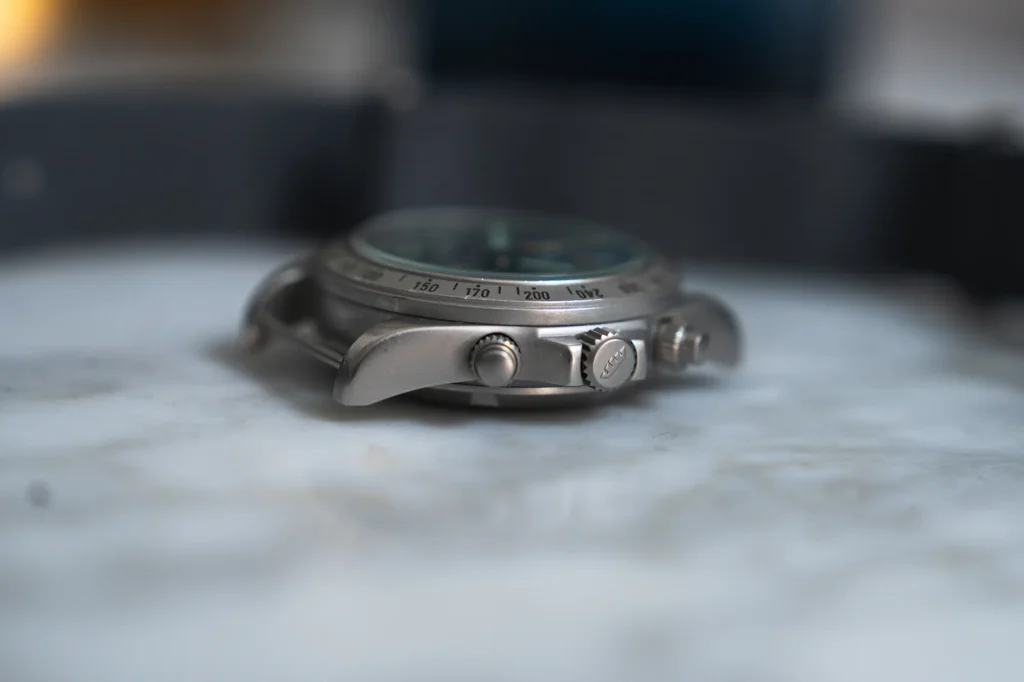
Everything about this watch still feels tack sharp today. From the indexes and the pin point precision with which the hands still align, to the screw down pushers and crown. This watch reveals something deeper about tool watches of the ‘90s, which is a character not found in finishes and flourishes, but in high and tight execution. This doesn’t feel like it’s trying to be a ‘luxury’ product, but it certainly does feel premium.
Today, the Official Cosmonauts Chronograph is a relatively rare sight, both in the wild and in the second hand market. Nice examples do come up from time to time, and present a relatively good value at under $2,000. This is the kind of watch that needs to be handled in person to truly appreciate. There is a huge amount of character represented in this watch, and its connection to our species’ space exploration brings a level of depth and genuine history to the watch that few others can approach.
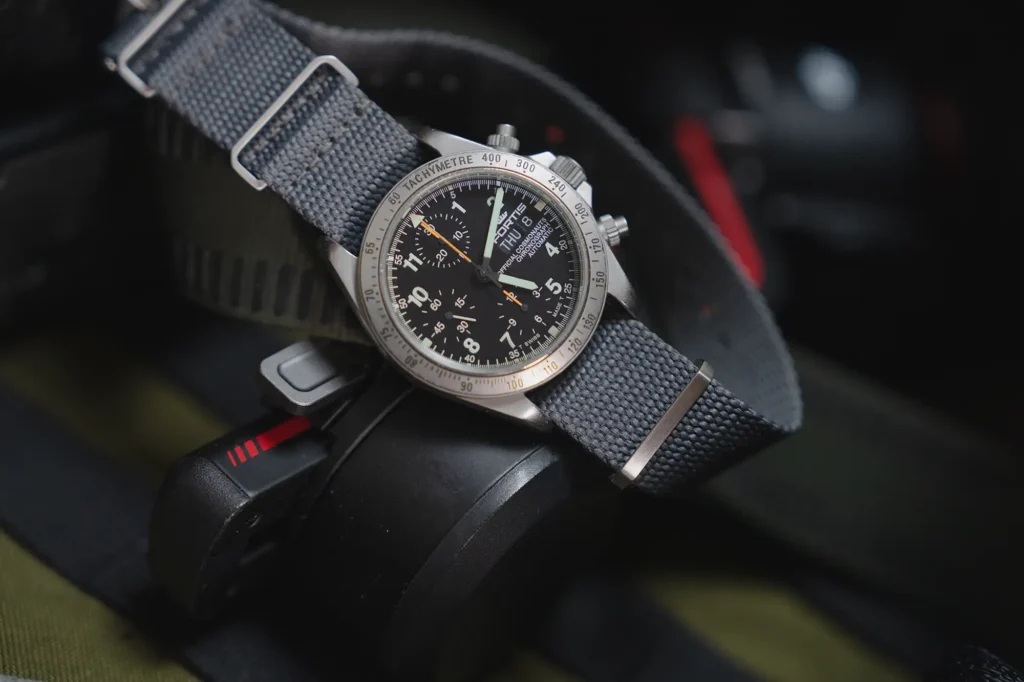
Overall, the Fortis OCC represents everything I love about ‘90s tool watches, and then some. The brand has bigger space ambitions these days, and have even gone so far as having prototypes of their Stratoliner sent to space in gaining Swedish Space Corporation certification. I love to see the brand continuing to push in this direction, however the simple character of their original concept has been lost to far more robust cases and designs. The days of a 38mm space faring tool watch are likely well behind us, but thankfully, plenty of examples of the original persist. And with any luck, humanity’s presence in space is still just getting started.

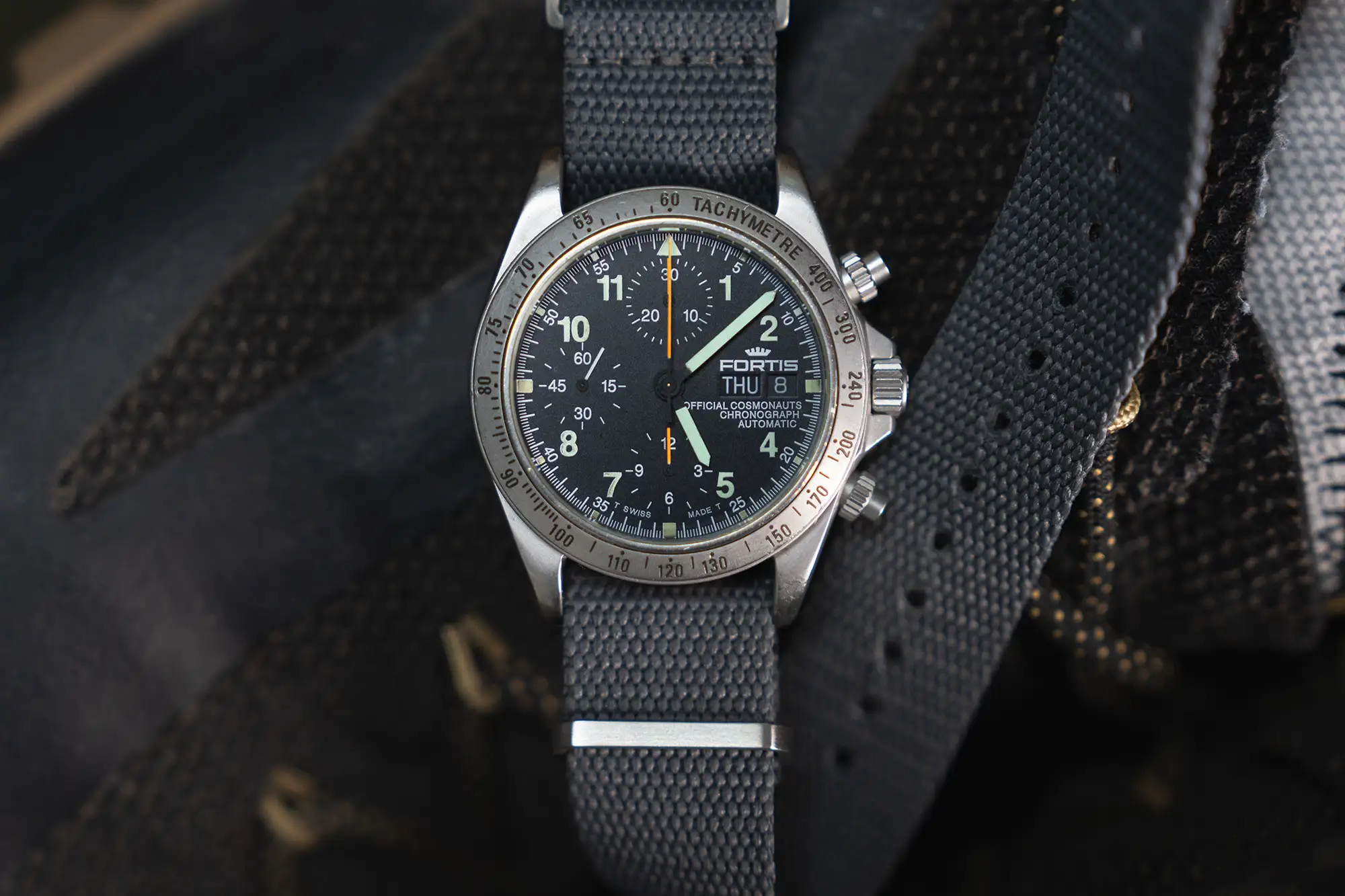
Comments
One response to “Video: The Original Fortis Official Cosmonaut Chronograph”
love it – fortis occ such great pieces! sometime around 1995 they also put out a 38mm model (I think only in Germany & Switzerland) with a manual lemania 1873 – so with the subdials at 3, 6, & 9. rare – and I’ve only ever come across 3 of these models ref 604.10.145 … no date, no day – my favourite for sure